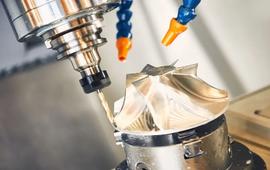Electrical discharge wire cutting machining is a new process developed based on electrical discharge machining. Currently, wire cutting technology is extensively used in production processing and the development of new products to directly cut parts, thereby improving production speed or shortening the development cycle.
Electrical discharge wire cutting machining, sometimes referred to as wire cutting, operates on the basic principle of using a continuously moving thin metal wire (usually molybdenum wire or copper wire) as the electrode. The workpiece undergoes pulse spark discharge to erode the metal and form the cut. During the cutting process, pulse discharges occur between the electrode wire and the workpiece. The electrode wire is connected to the negative pole of the pulse power supply, and the workpiece to the positive pole.
When a pulse voltage is applied, a spark discharge is generated between the electrode wire and the workpiece. The instant temperature at the center of the discharge channel can exceed 10,000°C. The high temperature melts the workpiece metal, and in some cases, vaporizes a small amount of it. The high temperature also causes part of the working fluid between the electrode wire and the workpiece to vaporize. This vaporized working fluid and metal vapor expand rapidly and exhibit explosive characteristics. This thermal expansion and localized micro-explosion throw out the molten and vaporized metal material, thus achieving electro-erosive cutting of the workpiece material.
The hardness of the workpiece material can be disregarded as long as it is conductive.
Thermal deformation is minimal. Although high temperatures are generated during processing, they are localized and brief.
The processed surface has an altered layer approximately 0.005mm thick. The thickness of this layer is related to the processing parameters and is proportional to the surface roughness of the processed surface.
There is no burr formation during processing. However, there are cut marks at the entrance of the wire cutting machine, which are related to the diameter of the electrode wire and the electrical processing parameters.
In summary, electrical discharge wire cutting machining, with its unique non-contact processing method, almost unlimited adaptability to material hardness, and advantages in high precision and complex contour processing, has become one of the key technologies in modern precision manufacturing. As control systems and processing techniques continue to be optimized, electrical discharge wire cutting technology will play an even more important role in the high-end manufacturing field in the future.
This is the first one.


